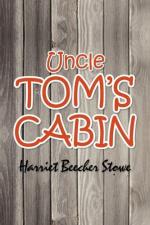Whoever has travelled in the New England States will remember, in some cool village, the large farmhouse, with its clean-swept grassy yard, shaded by the dense and massive foliage of the sugar maple; and remember the air of order and stillness, of perpetuity and unchanging repose, that seemed to breathe over the whole place. Nothing lost, or out of order; not a picket loose in the fence, not a particle of litter in the turfy yard, with its clumps of lilac bushes growing up under the windows. Within, he will remember wide, clean rooms, where nothing ever seems to be doing or going to be done, where everything is once and forever rigidly in place, and where all household arrangements move with the punctual exactness of the old clock in the corner. In the family “keeping-room,” as it is termed, he will remember the staid, respectable old book-case, with its glass doors, where Rollin’s History,* Milton’s Paradise Lost, Bunyan’s Pilgrim’s Progress, and Scott’s Family Bible,** stand side by side in decorous order, with multitudes of other books, equally solemn and respectable. There are no servants in the house, but the lady in the snowy cap, with the spectacles, who sits sewing every afternoon among her daughters, as if nothing ever had been done, or were to be done,—she and her girls, in some long-forgotten fore part of the day, “did up the work,” and for the rest of the time, probably, at all hours when you would see them, it is “done up.” The old kitchen floor never seems stained or spotted; the tables, the chairs, and the various cooking utensils, never seem deranged or disordered; though three and sometimes four meals a day are got there, though the family washing and ironing is there performed, and though pounds of butter and cheese are in some silent and mysterious manner there brought into existence.
* The Ancient History,
ten volumes (1730-1738), by the
French historian Charles
Rollin (1661-1741).
** Scott’s
Family Bible (1788-1792), edited with notes by
the English Biblical
commentator, Thomas Scott (1747-1821).
On such a farm, in such a house and family, Miss Ophelia had spent a quiet existence of some forty-five years, when her cousin invited her to visit his southern mansion. The eldest of a large family, she was still considered by her father and mother as one of “the children,” and the proposal that she should go to Orleans was a most momentous one to the family circle. The old gray-headed father took down Morse’s Atlas* out of the book-case, and looked out the exact latitude and longitude; and read Flint’s Travels in the South and West,** to make up his own mind as to the nature of the country.
* The Cerographic Atlas of the United States (1842-1845), by Sidney Edwards Morse (1794-1871), son of the geographer, Jedidiah Morse, and brother of the painter-inventor, Samuel F. B. Morse.
** Recollections
of the Last Ten Years (1826) by Timothy
Flint (1780-1840), missionary
of Presbyterianism to the
trans-Allegheny West.




